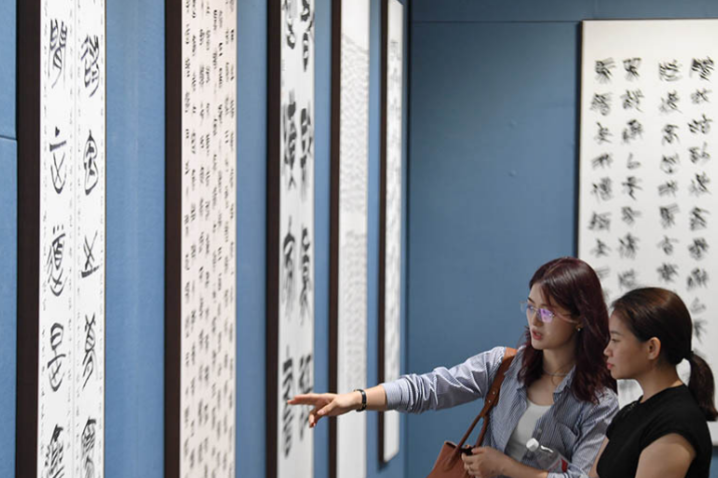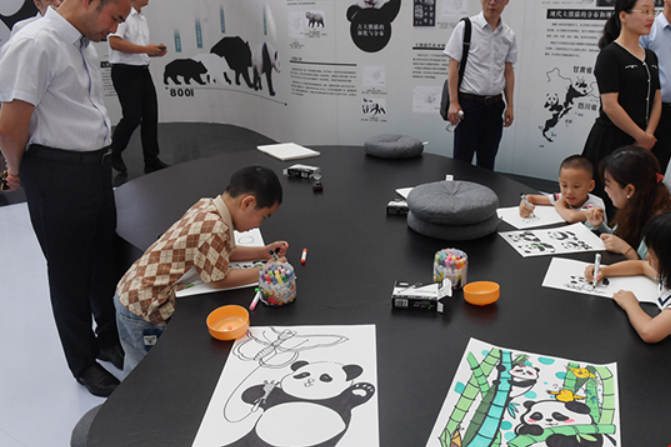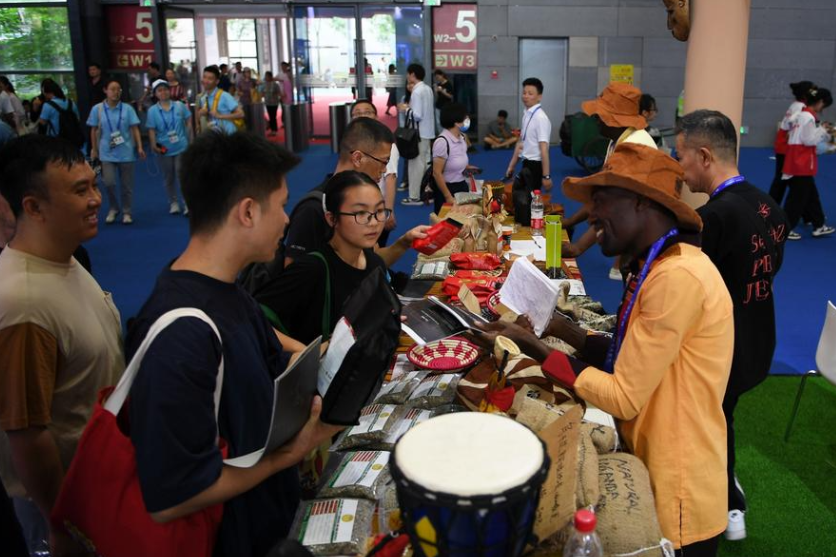A worker applies wax to an inkstick at a workshop of Huizhou inkstick in Shexian County, east China's Anhui Province, May 20, 2020. Inkstick is widely used in traditional Chinese painting and calligraphy. Produced in solid form rather than liquid, it lasts for generations without drying out. Along with ink brush, inkstone and paper, inkstick is one of the "Four Treasures of Study" in traditional Chinese culture. The Huizhou inkstick is a highly regarded inkstick and gets its name from the historical Huizhou region, largely in what is now Anhui Province. Due to the complexity of its making and the exquisite decorations applied to it, the Huizhou inkstick is often considered a piece of art itself. (Xinhua/Liu Junxi) A worker fills the painting on an inkstick with colors at a workshop of Huizhou inkstick in Shexian County, east China's Anhui Province, May 20, 2020. Inkstick is widely used in traditional Chinese painting and calligraphy. Produced in solid form rather than liquid, it lasts for generations without drying out. Along with ink brush, inkstone and paper, inkstick is one of the "Four Treasures of Study" in traditional Chinese culture. The Huizhou inkstick is a highly regarded inkstick and gets its name from the historical Huizhou region, largely in what is now Anhui Province. Due to the complexity of its making and the exquisite decorations applied to it, the Huizhou inkstick is often considered a piece of art itself. (Xinhua/Liu Junxi) Xiang Desheng, an inheritor of Huizhou inkstick making technique, paints with ink made from his inkstick in Shexian County, east China's Anhui Province, May 20, 2020. Inkstick is widely used in traditional Chinese painting and calligraphy. Produced in solid form rather than liquid, it lasts for generations without drying out. Along with ink brush, inkstone and paper, inkstick is one of the "Four Treasures of Study" in traditional Chinese culture. The Huizhou inkstick is a highly regarded inkstick and gets its name from the historical Huizhou region, largely in what is now Anhui Province. Due to the complexity of its making and the exquisite decorations applied to it, the Huizhou inkstick is often considered a piece of art itself. (Xinhua/Liu Junxi) Xiang Desheng, an inheritor of Huizhou inkstick making technique, works on a molding for inkstick at a workshop in Shexian County, east China's Anhui Province, May 20, 2020. Inkstick is widely used in traditional Chinese painting and calligraphy. Produced in solid form rather than liquid, it lasts for generations without drying out. Along with ink brush, inkstone and paper, inkstick is one of the "Four Treasures of Study" in traditional Chinese culture. The Huizhou inkstick is a highly regarded inkstick and gets its name from the historical Huizhou region, largely in what is now Anhui Province. Due to the complexity of its making and the exquisite decorations applied to it, the Huizhou inkstick is often considered a piece of art itself. (Xinhua/Liu Junxi) A worker hammers unfinished inksticks at a workshop of Huizhou inkstick in Shexian County, east China's Anhui Province, May 21, 2020. Inkstick is widely used in traditional Chinese painting and calligraphy. Produced in solid form rather than liquid, it lasts for generations without drying out. Along with ink brush, inkstone and paper, inkstick is one of the "Four Treasures of Study" in traditional Chinese culture. The Huizhou inkstick is a highly regarded inkstick and gets its name from the historical Huizhou region, largely in what is now Anhui Province. Due to the complexity of its making and the exquisite decorations applied to it, the Huizhou inkstick is often considered a piece of art itself. (Xinhua/Zhang Duan) Xiang Desheng, an inheritor of Huizhou inkstick making technique, makes a molding for inkstick at a workshop in Shexian County, east China's Anhui Province, May 20, 2020. Inkstick is widely used in traditional Chinese painting and calligraphy. Produced in solid form rather than liquid, it lasts for generations without drying out. Along with ink brush, inkstone and paper, inkstick is one of the "Four Treasures of Study" in traditional Chinese culture. The Huizhou inkstick is a highly regarded inkstick and gets its name from the historical Huizhou region, largely in what is now Anhui Province. Due to the complexity of its making and the exquisite decorations applied to it, the Huizhou inkstick is often considered a piece of art itself. (Xinhua/Liu Junxi) Xiang Desheng, an inheritor of Huizhou inkstick making technique, collects soot, the main ingredient in the making of inksticks, at a workshop in Shexian County, east China's Anhui Province, May 21, 2020. Inkstick is widely used in traditional Chinese painting and calligraphy. Produced in solid form rather than liquid, it lasts for generations without drying out. Along with ink brush, inkstone and paper, inkstick is one of the "Four Treasures of Study" in traditional Chinese culture. The Huizhou inkstick is a highly regarded inkstick and gets its name from the historical Huizhou region, largely in what is now Anhui Province. Due to the complexity of its making and the exquisite decorations applied to it, the Huizhou inkstick is often considered a piece of art itself. (Xinhua/Zhang Duan) Inksticks are dried at a workshop of Huizhou inkstick in Shexian County, east China's Anhui Province, May 21, 2020. Inkstick is widely used in traditional Chinese painting and calligraphy. Produced in solid form rather than liquid, it lasts for generations without drying out. Along with ink brush, inkstone and paper, inkstick is one of the "Four Treasures of Study" in traditional Chinese culture. The Huizhou inkstick is a highly regarded inkstick and gets its name from the historical Huizhou region, largely in what is now Anhui Province. Due to the complexity of its making and the exquisite decorations applied to it, the Huizhou inkstick is often considered a piece of art itself. (Xinhua/Zhang Duan) Xiang Desheng, an inheritor of Huizhou inkstick making technique, makes soot, the main ingredient in the making of inksticks, at a workshop in Shexian County, east China's Anhui Province, May 21, 2020. Inkstick is widely used in traditional Chinese painting and calligraphy. Produced in solid form rather than liquid, it lasts for generations without drying out. Along with ink brush, inkstone and paper, inkstick is one of the "Four Treasures of Study" in traditional Chinese culture. The Huizhou inkstick is a highly regarded inkstick and gets its name from the historical Huizhou region, largely in what is now Anhui Province. Due to the complexity of its making and the exquisite decorations applied to it, the Huizhou inkstick is often considered a piece of art itself. (Xinhua/Zhang Duan) A worker fills the painting on an inkstick with colors at a workshop of Huizhou inkstick in Shexian County, east China's Anhui Province, May 20, 2020. Inkstick is widely used in traditional Chinese painting and calligraphy. Produced in solid form rather than liquid, it lasts for generations without drying out. Along with ink brush, inkstone and paper, inkstick is one of the "Four Treasures of Study" in traditional Chinese culture. The Huizhou inkstick is a highly regarded inkstick and gets its name from the historical Huizhou region, largely in what is now Anhui Province. Due to the complexity of its making and the exquisite decorations applied to it, the Huizhou inkstick is often considered a piece of art itself. (Xinhua/Liu Junxi)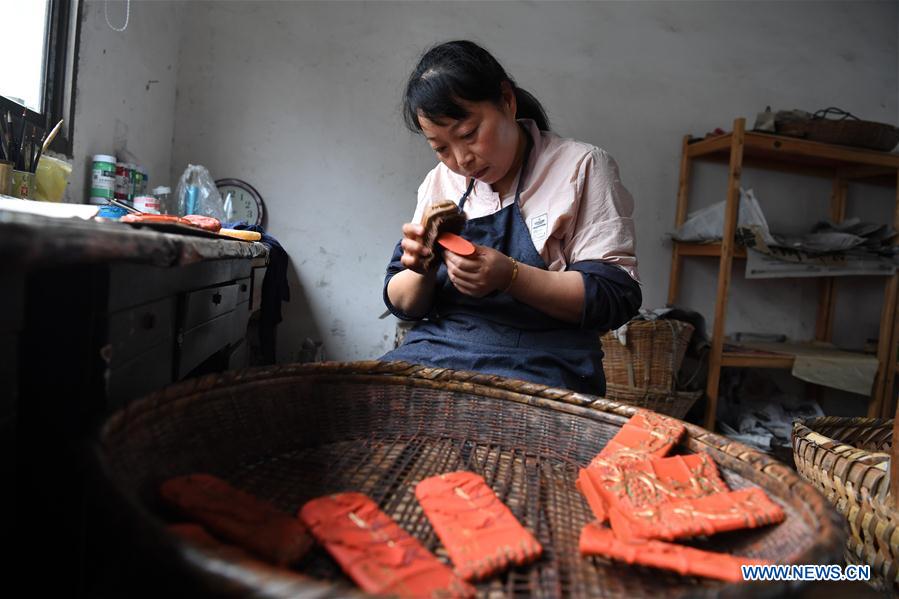
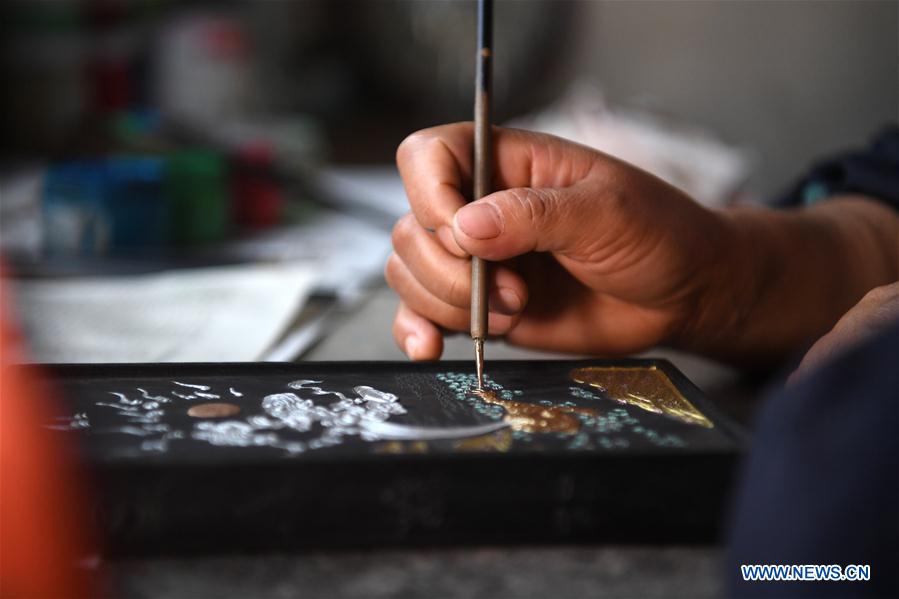
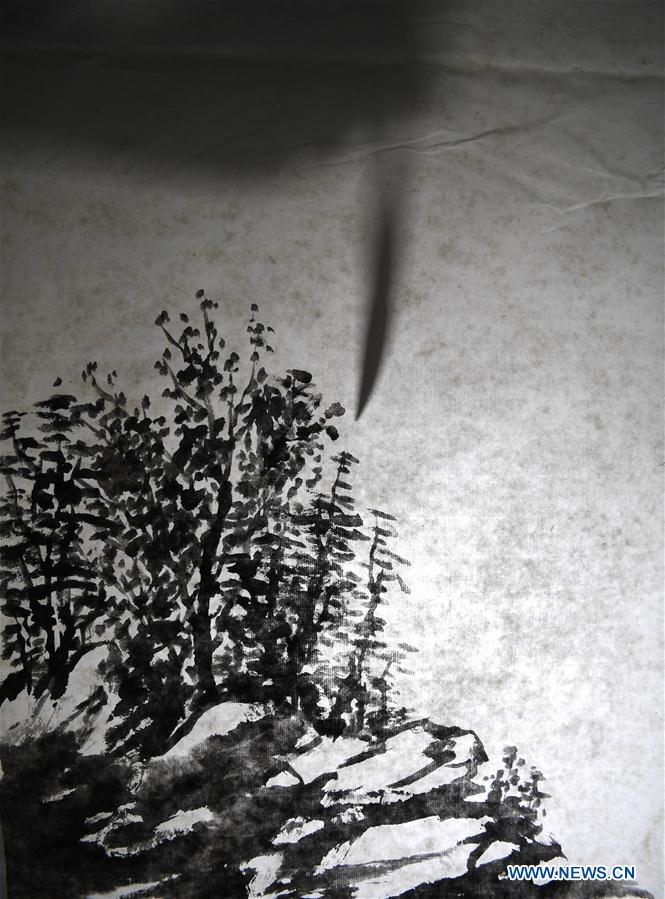
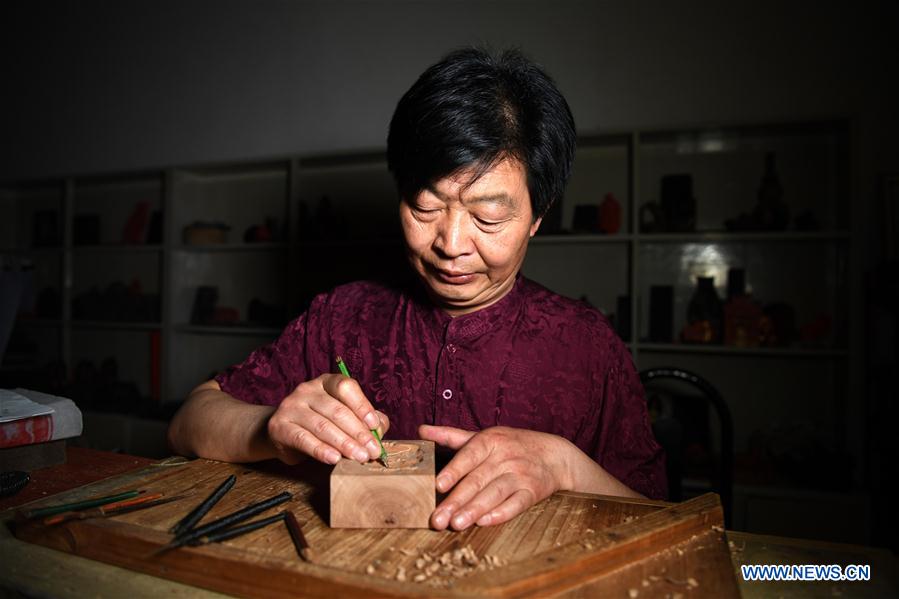
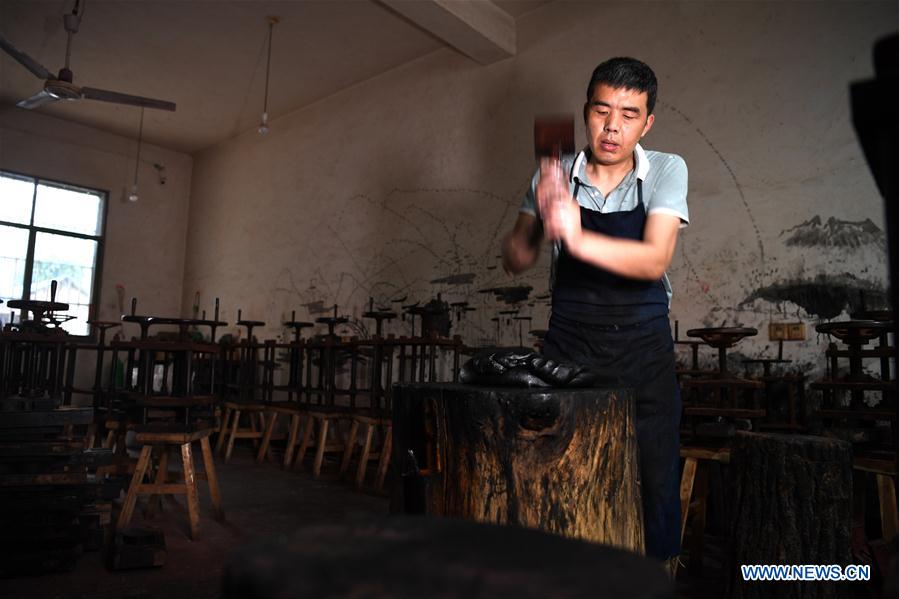
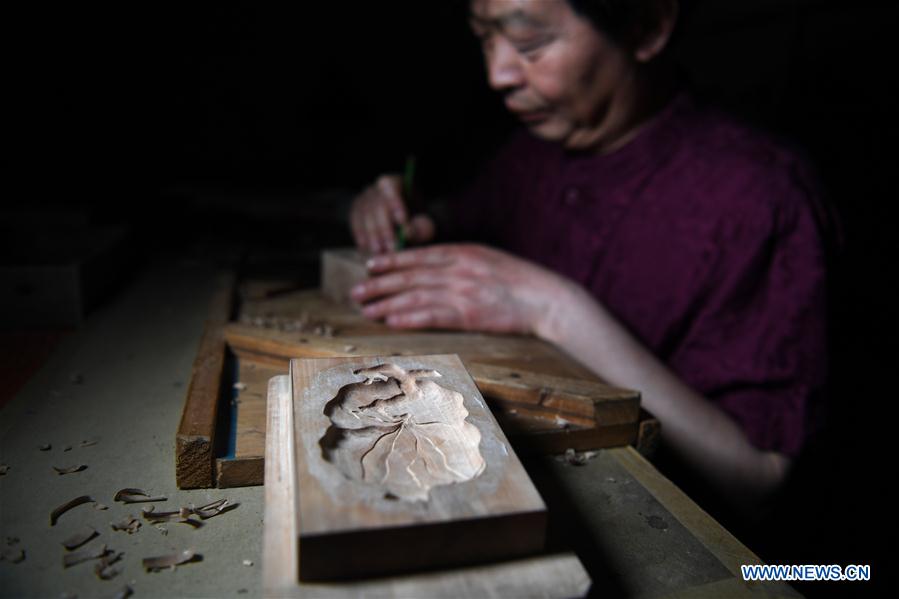
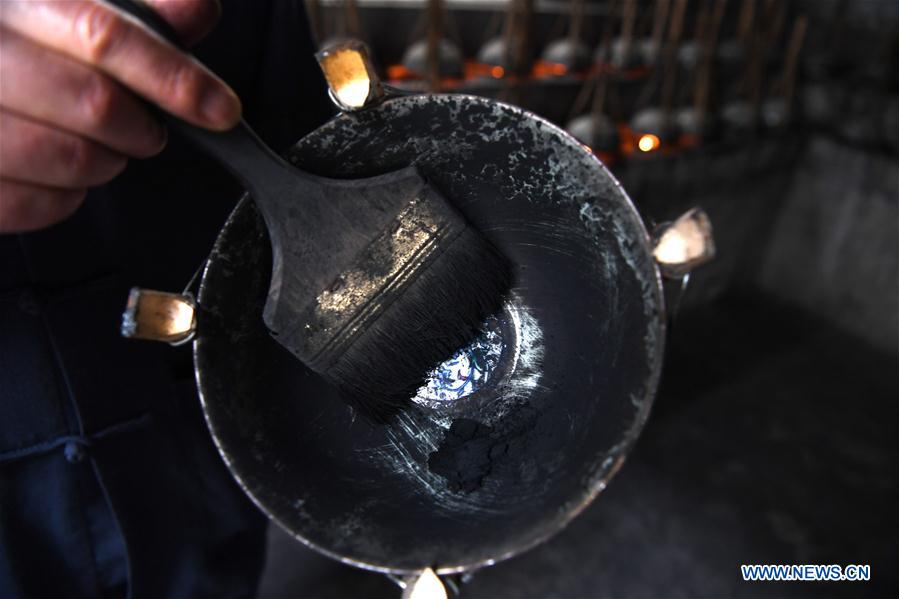
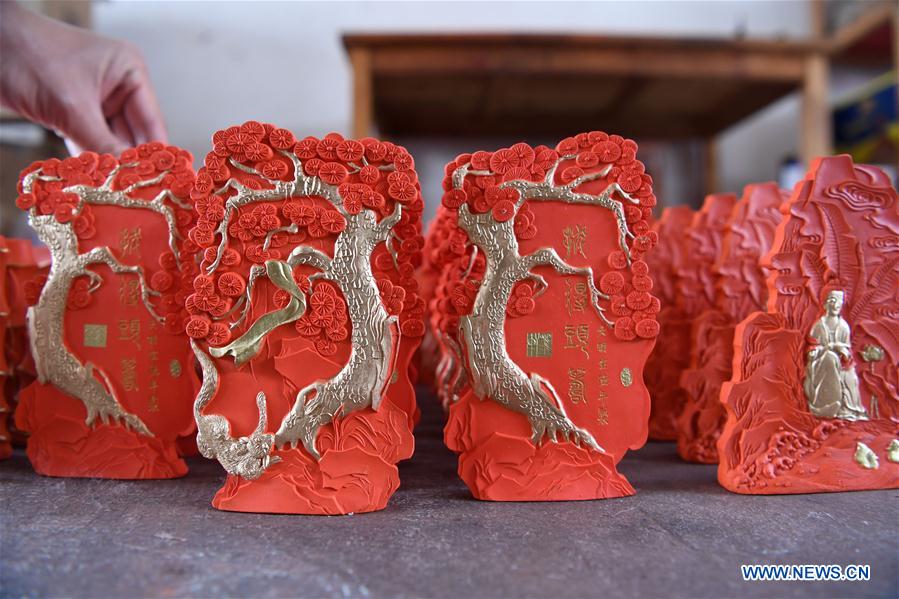
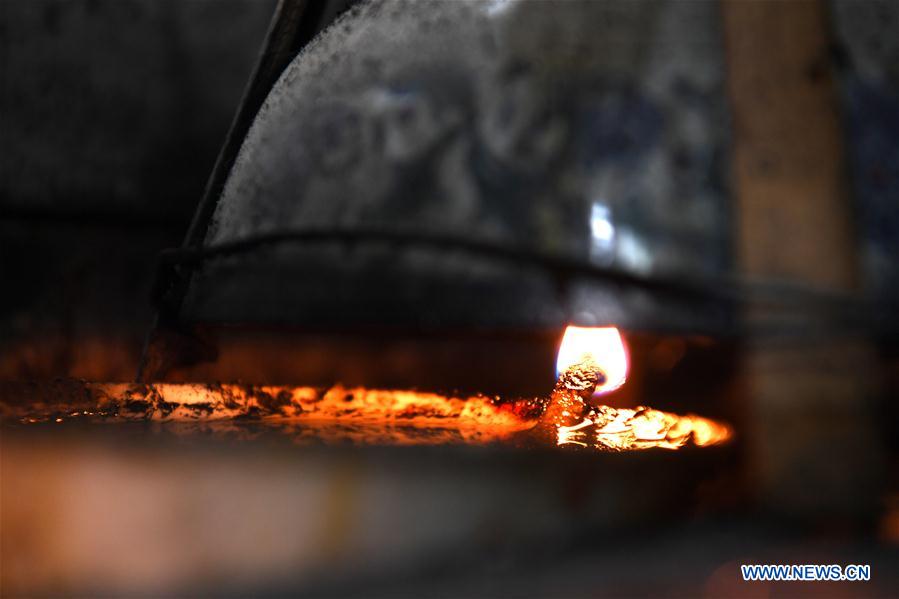
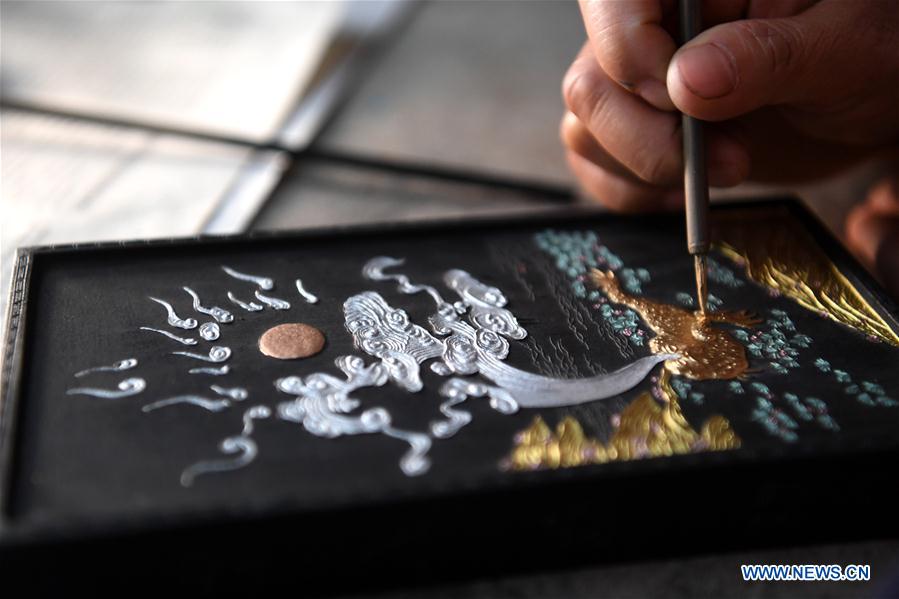
In pics: Huizhou inkstick in Anhui
Editor:李苏璇
Source:Xinhua.com
Updated:2020-06-05 16:21:36
Source:Xinhua.com
Updated:2020-06-05 16:21:36
Special
Contact
Welcome to English Channel! Any suggestion, welcome.Tel:0731-82965627
lisl@rednet.cn
zhouqian@rednet.cn



